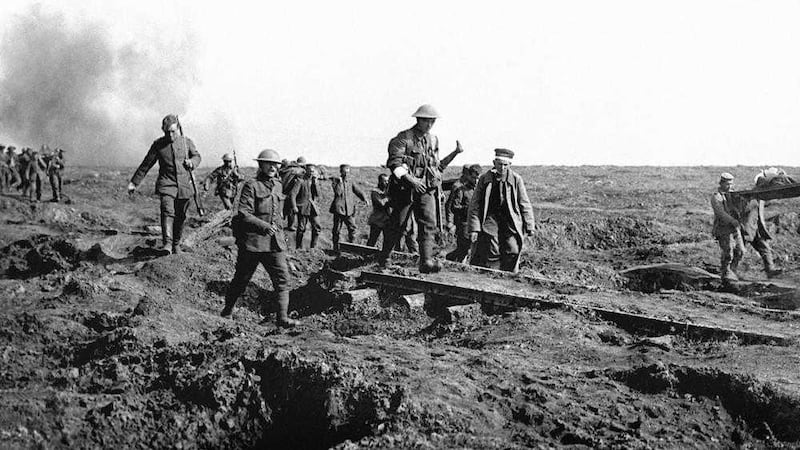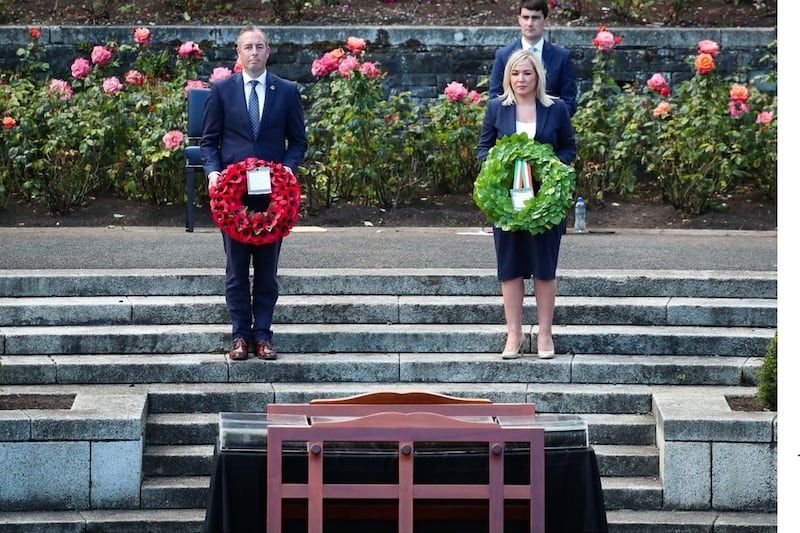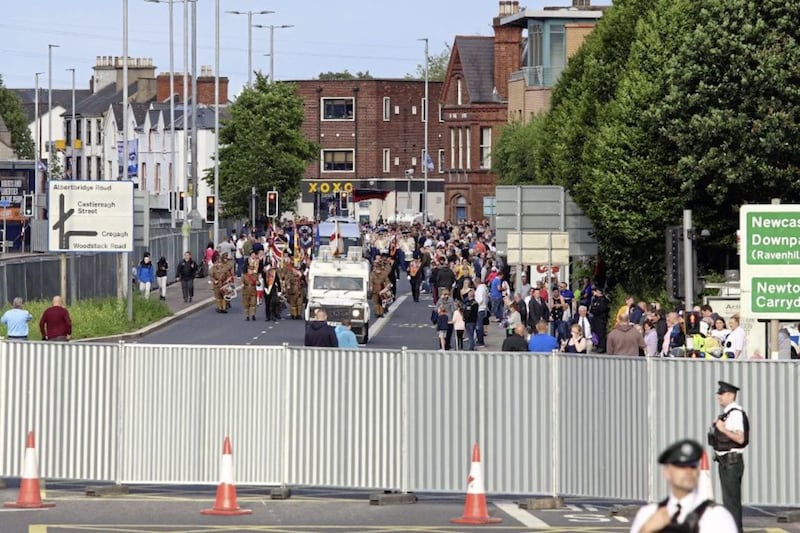IT may be the only battle of the 20th century whose name is instantly recognisable, even to those who have never opened a history book. Political historian Dr Éamon Phoenix reflects on the Battle of the Somme which has in recent years seen a new recognition of the involvement of Irishmen of both traditions, from north and south, in the Great War.
THE appalling losses suffered by British forces at the Somme, particularly on its bloody first day on July 1, 1916 when almost 20,000 men walked slowly to their deaths, has seared itself into British and more especially Unionist consciousness in the north of Ireland.
The 36th (Ulster) Division alone lost 2,000 men that day in the muddy fields around the River Somme in northern France and remembering that ‘lost generation’ has been an intrinsic part of the Ulster Unionist and loyalist tradition ever since. In real terms, the carnage on the Somme was Unionism’s equivalent to the ‘blood sacrifice’ of the Easter Rising just a few months earlier. Yet in Britain the Somme symbolises the futility of conflict. It was by far the worst day in the British Army’s history.
The 36th Ulster Division was essentially ‘Carson’s Army’- the Ulster Volunteer Force - raised in 1913 at the height of the Home Rule crisis to prevent the setting-up of an all-Ireland Parliament in Dublin. By August 1914 Ireland was on the brink of civil war as the UVF and the rival Irish Volunteers ran in guns from the Kaiser’s Germany.
However, the outbreak of war changed everything as both Edward Carson and John Redmond pledged their volunteers to the British war effort.
Following consultations with Kitchener at the War Office, Carson was permitted to raise a new division of 20,000 men to fight in France. A sympathetic Kitchener made three important concessions: the new unit would be called the ‘Ulster’ division ; it would be based on the pre-war UVF and UVF officers would be commissioned in the new ‘Ulster Army’.
The new unit was essentially a ‘Pals Brigade’ with mainly working-class lads from the Shankill and the rural townlands enlisting alongside their peers. So the UVF men of east Belfast became the 8th Battalion, Royal Irish Rifles while the Tyrone Volunteers formed a battalion of the Inniskilling Fusiliers and so on.
``They were a covenanting army'', writes historian, Philip Orr, equally committed to the survival of Protestant Ulster as to Britain and the Empire. But when they died in their thousands that summer, entire Belfast streets and rural villages would lose their sons in frightening numbers. In this sense the Somme could be memorialised as a people’s story, hardwired to an Ulster/British identity and the defence of the Empire.
By October 1915, the 36th were in France and by June 1916 contemplating action on the Somme.
There was no sound reason for undertaking a massive offensive that summer except that the British generals needed to launch a major offensive somewhere. General Haig, the British commander, wanted a breakthrough. The objective was to pierce the German front line and to allow the cavalry to push through the gap and open the road to Berlin. Yet historians argue that Haig’s strategy was unclear: ‘the purpose was unclear at the time and remains disputed thereafter’ says military expert Sir Hew Strachan. ``The ultimate absurdity is that we’re still not sure what the outcome of the battle was''.
The Ulstermen were in the line near the village of Thiepval, facing the formidable Schwaben Redoubt, a strong system of German defences which included five lines of trenches, deep underground dug-outs and strategic machine-gun emplacements. Their orders were to capture the Redoubt on July 1. The ground offensive was preceded by seven days of merciless artillery bombardment designed to entomb the Germans in their dugouts.
On the eve of the advance, the 36th’s commander, General Oliver Nugent - a Cavan landlord - praised the valour of ‘our men from the north’ who were now to be put to the test. He added prophetically: ``It makes me very sad to think what the price may be.''
Zero hour was 7.30am on July 1, 1916. Each soldier went into battle carrying his weapon, 220 rounds of ammunition, grenades, rations, gas helmets and two sandbags .Though many were Orangemen few would have been aware of the significance of the date as the anniversary of the Battle of the Boyne under the old calendar. No opposition was expected as the 100,000 Allied soldiers emerged from their trenches to walk across No Man’s Land.
But the bombardment had had only a limited effect and they were met with an incessant hail of machine-gun fire. The Ulstermen succeeded in penetrating as far as the German fifth line. However, their supporting divisions failed to advance, leaving the Northerners open to heavy enfilading fire. By the time they were withdrawn on July 2 they had suffered 5,500 casualties, including 2,000 killed.
A teenage volunteer from Belfast’s Grosvenor Road, Private Herbie Beattie (17) wrote to his mother: ``If hell is any worse, I would not like to go to it.'' For his part, war artist Jim Mault said recorded: ``The slopes of Thiepval run red with the blood of Ulstermen, dead in heaps, dying in hundreds. God above us, this is glorious war!''
In the end the sacrifice of the men of Ulster was valiant but in vain as most of their gains were reversed. Contrary to popular myth, the 36th were not the only Irishmen to sacrifice their lives that day. The 1st Battalion of the Royal Dublin Fusiliers – part of Redmond’s Irish Brigade - were cut to pieces nearby. By November when it finally ended, it had cost a million lives on all sides.
In the wake of the 36th’s devastating losses there were attempts to link these to Protestant Ulster’s determination to remain under the Union flag. After partition the Somme quickly became an ‘identity narrative’ for Ulster loyalists with Somme parades and memorials. With 1916 becoming the main Republican narrative the nationalists who died in the Great War were forgotten by both sides.
Recent years, however, have seen a new recognition of the involvement of Irishmen of both traditions in the Great War – a rare example in Ireland of shared sacrifice. And on July 9 the Irish government will honour all Irishmen who died at the Somme at a special ceremony in Islandbridge in Dublin.








